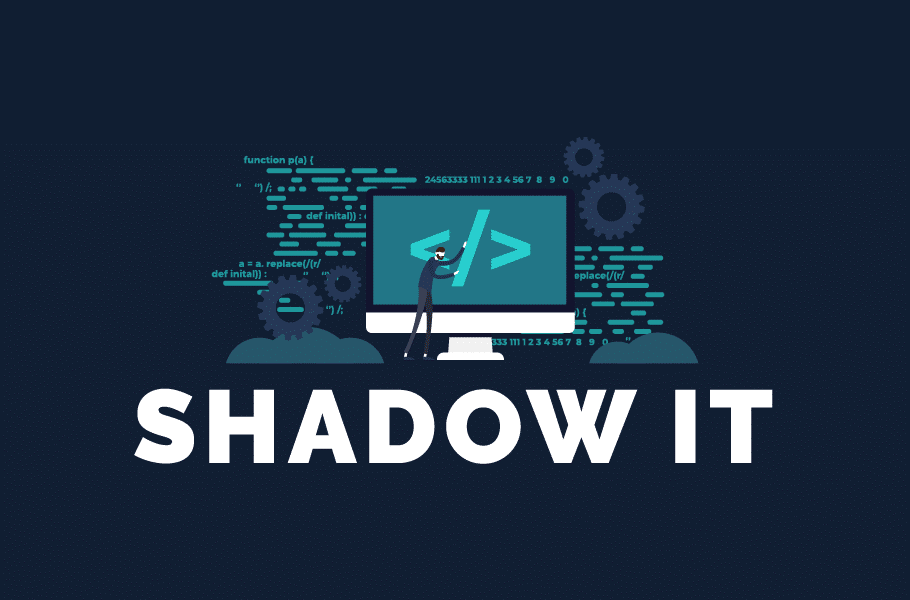What is Shadow IT?
Shadow IT refers to the practice of using information technology (IT) systems, software, applications, or services without the knowledge or approval of the IT department within an organization. It typically occurs when employees or departments within an organization adopt and use technology solutions that are not sanctioned or supported by the official IT department.
Reason Behind Shadow IT
1. Convenience:
Employees may find it easier or more convenient to use their preferred tools or applications to meet their immediate needs rather than going through official channels or IT approval processes.
2. Specialized requirements:
Certain departments or individuals may have unique technology requirements that are not adequately addressed by the standard IT offerings within the organization, leading them to seek alternative solutions.
3. Faster innovation:
Some employees may believe that external tools or services offer better features or functionality than what the official IT department provides. They may adopt these tools to improve productivity or innovation within their own work.
4. Lack of awareness:
In some cases, employees may not be aware of the policies and procedures for obtaining IT support or may not be familiar with the approved tools and services provided by the organization.
Challenges Shadow IT pose for organizations
1. Security risks:
Unsanctioned software or services may not meet the organization’s security standards, potentially leading to data breaches, unauthorized access, or vulnerabilities.
2. Compliance issues:
The use of unapproved software or services can result in non-compliance with industry regulations or internal policies, leading to legal and regulatory consequences.
3. Integration difficulties:
Shadow IT can create compatibility and integration challenges when different departments or individuals use disparate technologies that do not work well together or integrate with the organization’s existing systems.
How to control Shadow IT
Controlling shadow IT requires a combination of proactive measures and ongoing monitoring. Here are some strategies to help control shadow IT within an organization:
1. Develop a comprehensive IT governance framework:
Establish a framework that outlines the processes, policies, and procedures for technology acquisition, usage, and management. This framework should clearly define the roles and responsibilities of the IT department, employees, and other stakeholders involved in technology decision-making.
2. Improve visibility and monitoring:
Implement robust monitoring systems to gain visibility into the technology landscape within the organization. Use network monitoring tools, application discovery tools, and data loss prevention systems to identify unauthorized software, applications, or services being used by employees.
3. Implement access controls and permissions:
Ensure that access controls and permissions are in place to restrict unauthorized access to IT resources. Regularly review and update user permissions to align with job roles and responsibilities, preventing individuals from installing or using unauthorized technology solutions.
4. Strengthen security measures:
Implement strong security measures, such as firewalls, intrusion detection and prevention systems, antivirus software, and encryption protocols, to protect the organization’s network and data. Regularly update and patch systems to address vulnerabilities and minimize the risk of security breaches.
5. Educate employees:
Conduct regular training and awareness programs to educate employees about the risks associated with shadow IT. Raise awareness about the potential security threats, compliance issues, and negative impacts on productivity and collaboration. Provide guidance on the approved technology solutions and the proper channels for requesting IT support.
6. Foster collaboration and communication:
Encourage open communication channels between the IT department and employees. Create forums or platforms where employees can share their technology needs, challenges, and suggestions. By involving employees in the decision-making process and addressing their technology requirements, you can reduce the likelihood of shadow IT.
7. Offer approved alternatives:
Work closely with employees to understand their technology needs and provide approved alternatives that meet their requirements. Collaborate with different departments to identify and evaluate technology solutions that align with their goals while ensuring compliance and security.
8. Regularly review and update IT policies:
Continuously review and update IT policies and guidelines to adapt to changing technology trends and address emerging risks. Regular policy reviews help ensure that employees have access to the necessary technology tools while maintaining control over IT infrastructure.
9. Monitor and address root causes:
Continuously monitor and analyze the root causes behind the adoption of shadow IT. Identify recurring patterns or trends and address them proactively. This could involve improving IT support, enhancing existing technology solutions, or providing additional training and resources to address specific departmental needs.
10. Establish a feedback mechanism:
Create a feedback mechanism where employees can report potential instances of shadow IT without fear of reprisal. Encourage employees to share their concerns and observations to allow the IT department to investigate and address issues promptly.
Controlling shadow IT requires a combination of technological measures, policy enforcement, education, and collaboration. If you wish to mitigate and control Shadow IT for your organization, contact Velcode Solutions at +91-1145694931 , +91-9310905611 or can drop a mail to our sales team at sales@velcodesolutions.com.

